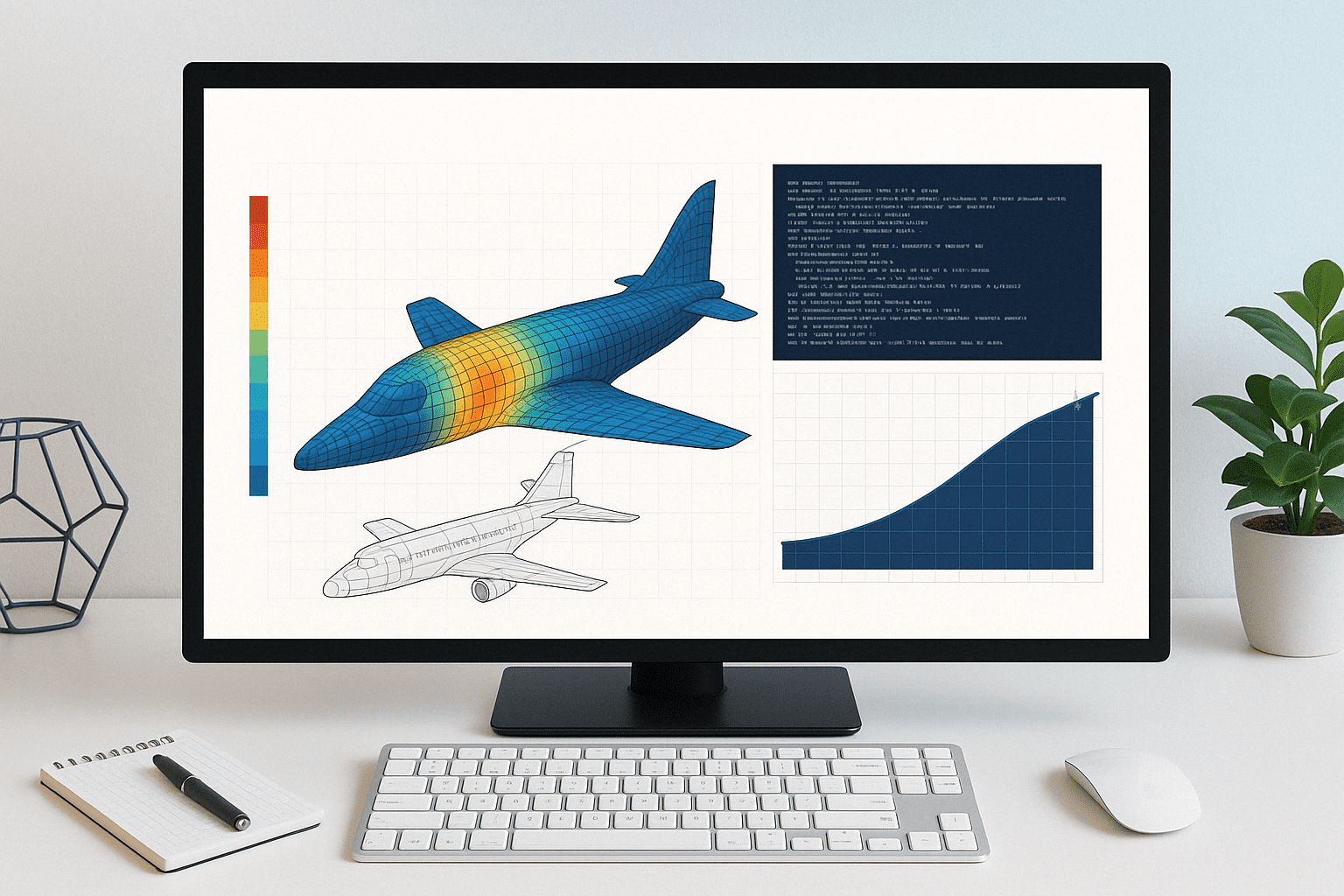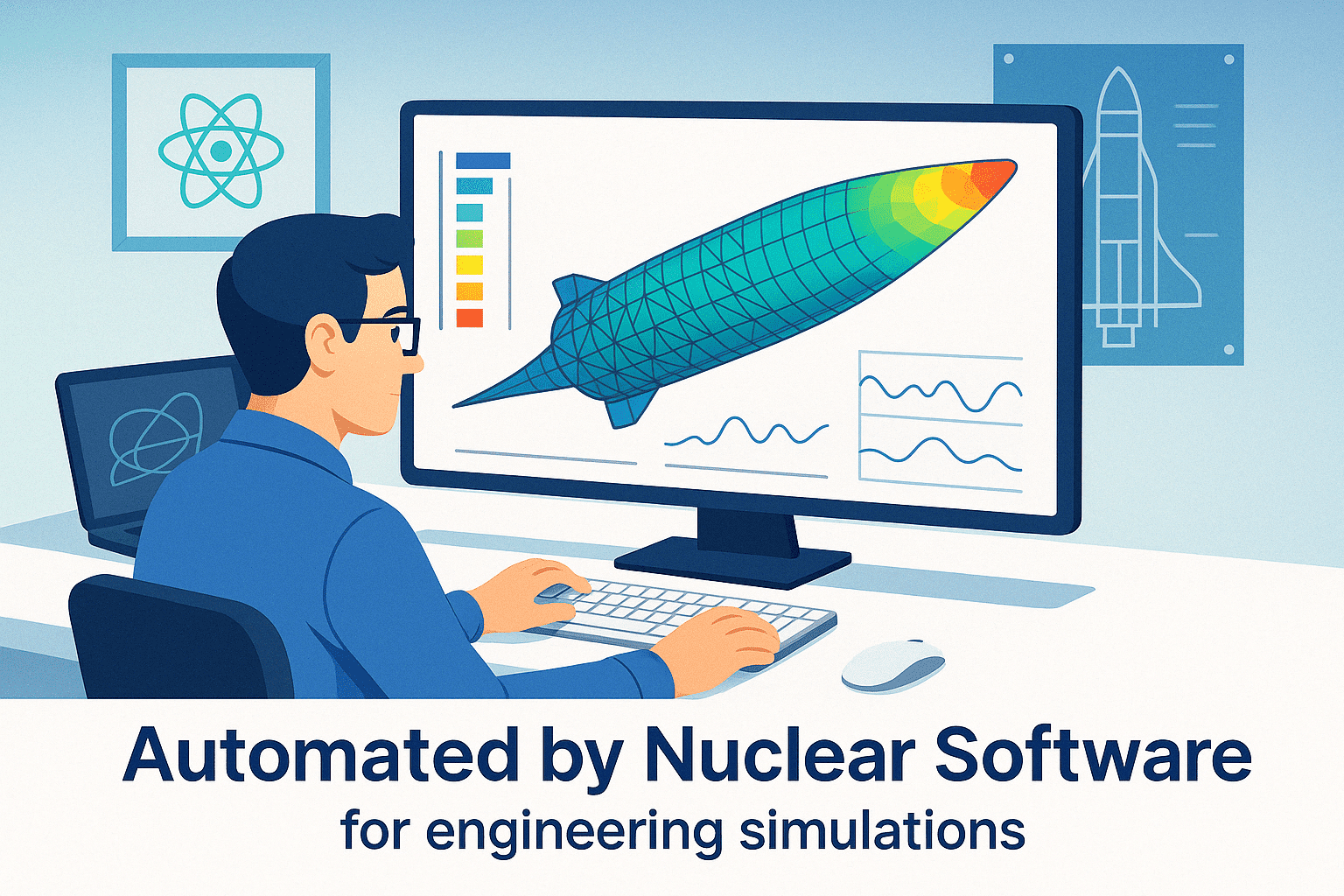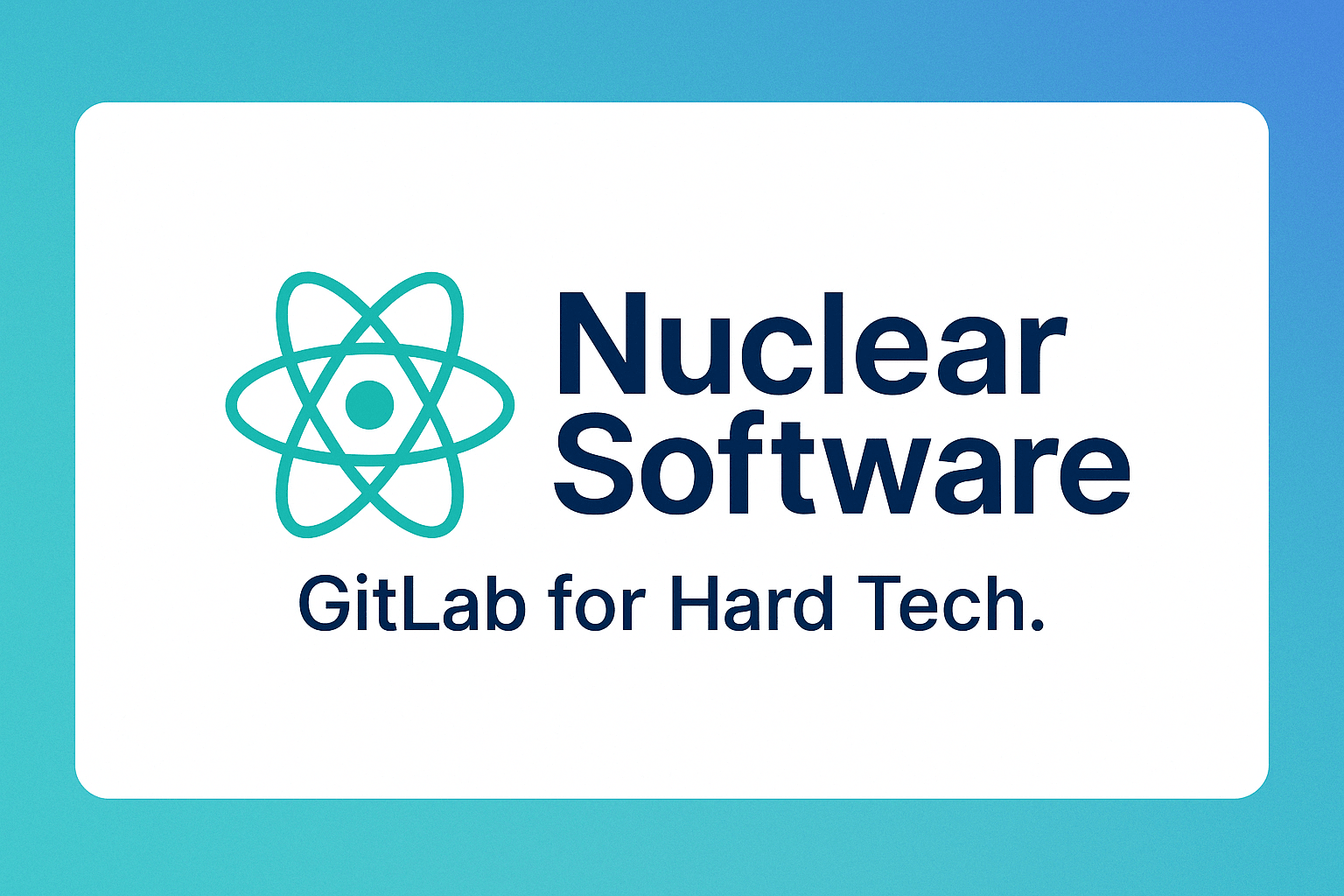Nuclear Software: The GitLab for Engineering Simulations
Nuclear Software is redefining the future of hard tech by introducing the first continuous integration (CI) platform purpose-built for engineering simulations. In a world where complex industries like aerospace, automotive, nuclear, and advanced manufacturing rely heavily on simulations to ensure product quality and safety, Nuclear Software eliminates outdated, time-consuming workflows. Founded in 2024 by Emanuel Gordis and Javi Vega, the San Francisco-based startup has set out to do for engineering what GitLab did for software development.
What Problem Is Nuclear Software Solving?
The "50 PhD Problem" is at the heart of Nuclear Software's mission. In industries where design complexity is the norm, engineering teams often find themselves trapped in inefficient workflows. Each change in a component can affect multiple interconnected systems, requiring hours—or even days—of manual simulation reruns, geometry remeshing, and version reconciliation.
Companies often hire large teams of PhDs just to handle simulation infrastructure and data processing, not product development. Engineers spend up to half their time switching between disconnected tools, tracking changes across siloed systems, and manually preparing data for simulations. The result? Bottlenecks, costly mistakes, and prolonged development timelines.
How Does Nuclear Software Work?
Nuclear Software provides a unified platform where CAD models connect directly to advanced simulation tools—neutronics, CFD (computational fluid dynamics), structural analysis, thermal simulations, and more. The platform automates geometry conversion, meshing, and workflow execution. Every design change, no matter how small, triggers simulations through a customizable pipeline.
This real-time simulation workflow mirrors modern software development's CI/CD pipeline. Engineers can instantly test the implications of a design update and visualize results without leaving the platform. By removing manual steps and integrating simulation tools into a cohesive system, Nuclear Software helps engineering teams move faster and with more confidence.
Teams can also collaborate across departments and geographies without the fear of losing data fidelity or context. Since every update is automatically logged and associated with specific simulations, communication becomes more transparent and efficient. This eliminates the need for ad-hoc documentation and reduces the risk of misunderstandings between design, testing, and compliance teams.
Why Is Version Control So Crucial in Engineering?
Engineering simulations are high-stakes and require meticulous traceability. Nuclear Software offers robust version control similar to Git-based software repositories. Each design change is stored along with corresponding simulation results, creating a comprehensive history of development iterations.
This centralized repository acts as a single source of truth. It enables quick issue diagnosis, seamless rollbacks, and full accountability. Whether the team is developing rocket engines or nuclear reactors, every piece of data is linked and secured.
Furthermore, having an immutable history of design and simulation interactions makes audits and certification processes significantly more efficient. For industries where documentation and process control are tightly regulated, this built-in traceability can result in faster approvals and improved stakeholder confidence.
How Does the Platform Enhance Security and Compliance?
In regulated industries such as nuclear and aerospace, security is not optional—it's mandatory. Nuclear Software includes granular access control features to safeguard proprietary designs and sensitive simulation codes. Teams can set role-based permissions and ensure compliance with regulatory requirements.
By keeping all workflows, results, and designs under one secure umbrella, the platform ensures data integrity and minimizes the risk of breaches. This is particularly important for government contractors and research labs dealing with classified or export-controlled data.
Additionally, the platform supports end-to-end encryption and secure cloud deployments that align with global compliance standards such as ITAR, ISO 27001, and NIST frameworks. These features are essential for organizations needing to operate in both commercial and defense sectors.

What Industries Benefit Most from This Platform?
While originally inspired by the challenges in nuclear engineering, the platform's capabilities are applicable to a wide array of industries:
- Aerospace: Simulating aerodynamics, thermal loads, and structural stress.
- Automotive: Testing crash scenarios, material fatigue, and heat dissipation.
- Advanced Manufacturing: Validating additive manufacturing processes and component tolerances.
- Energy: Streamlining simulation of power plants and renewable energy systems.
- Medical Devices: Accelerating the simulation of complex biomechanical systems under regulatory oversight.
Each of these sectors involves complex, multidisciplinary workflows that benefit from Nuclear Software’s real-time validation and simulation management.
What Makes Nuclear Software Different from Traditional Simulation Tools?
Traditional simulation platforms are siloed, requiring manual handoffs between CAD software, meshing tools, and simulation engines. In contrast, Nuclear Software integrates everything into one pipeline:
- No manual prep: Geometry conversions and meshing are handled automatically.
- Real-time feedback: Simulations trigger on every design change.
- Custom pipelines: Users can tailor workflows to individual components or full systems.
- Collaboration-ready: Teams can share data, track progress, and validate in sync.
This end-to-end automation replaces brittle, homegrown infrastructure with a streamlined and scalable system.
Beyond technical features, Nuclear Software also provides visual dashboards that summarize performance metrics, simulation outcomes, and iteration timelines. These dashboards are valuable not only for engineers but also for managers and external stakeholders who require high-level overviews of project status.
Who Are the Founders and What Is Their Vision?
Emanuel Gordis and Javi Vega bring a unique blend of engineering and software expertise. Emanuel, who became the youngest NRC-licensed nuclear reactor operator in the U.S. at 18, has worked at Lawrence Livermore National Lab and helped build AWS GovCloud. He’s intimately familiar with the hurdles of running complex simulations.
Javi, a former engineer at Google Maps, contributed to ML-assisted tooling and wrote an academic thesis on the link between tech development and economic growth. Their combined experience gives Nuclear Software both the technical depth and the product vision to bridge the gap between physical engineering and DevOps-level efficiency.
Together, they envision a future where simulation workflows are just as agile and automated as code deployments, allowing hard tech teams to prototype, test, and ship with the same velocity seen in Silicon Valley software companies.
How Does Nuclear Software Impact the Future of Hard Tech?
The long-term goal is to make starting a hard tech company as easy as launching a software startup. By removing simulation bottlenecks, enabling rapid iteration, and ensuring regulatory compliance from the ground up, Nuclear Software is accelerating innovation in sectors that were previously slowed by outdated tools.
In doing so, it supports a broader trend: the resurgence of advanced manufacturing in the United States. With tools like Nuclear Software, engineers can develop complex systems, like reactors, rockets, or autonomous vehicles, with the same agility that software teams enjoy today.
This democratization of engineering simulations could ultimately lead to a new generation of startups in energy, aerospace, and beyond—ventures that might otherwise be stifled by high upfront infrastructure costs and long development timelines.

What’s Next for Nuclear Software?
As the company continues to grow, future plans likely include broader tool integrations, deeper AI-driven simulation optimization, and expanded enterprise features. With only a two-person founding team and a massive market to address, the potential for impact is enormous.
There is also potential for real-time collaboration tools, version-aware simulation reruns, and API access for custom integrations. These enhancements would further embed Nuclear Software into the core of engineering workflows across enterprises of all sizes.
Backed by Y Combinator and led by two deeply technical founders, Nuclear Software stands poised to redefine how engineering simulations are built, managed, and scaled in the 21st century.

